Representative Elementary Volume Estimation and Neural Network-Based Prediction of Change Rates of Dense Non-Aqueous Phase Liquid Saturation and Dense Non-Aqueous Phase Liquid–Water Interfacial Area in Porous Media
Abstract
1. Introduction
2. Materials and Methods
2.1. Experiment Procedure
2.2. REV Evaluation
2.3. BP Neural Network
3. Results and Discussion
3.1. So Rate and AOW Rate of PCE Plume
3.2. The REV of So Rate and AOW Rate
3.3. Predicting REV Based on BP Neural Network
4. Conclusions
Supplementary Materials
Author Contributions
Funding
Data Availability Statement
Conflicts of Interest
References
- Alazaiza, M.Y.D.; Copty, N.K.; Abunada, Z. Experimental investigation of cosolvent flushing of DNAPL in double-porosity soil using light transmission visualization. J. Hydrol. 2020, 584, 124659. [Google Scholar] [CrossRef]
- Bob, M.M.; Brooks, M.C.; Mravik, S.C.; Wood, A.L. A modified light transmission visualization method for DNAPL saturation measurements in 2-D models. Adv. Water Resour. 2008, 31, 727–742. [Google Scholar] [CrossRef]
- Brown, G.O.; Hsieh, H.T. Evaluation of laboratory dolomite core sample size using representative elementary volume concepts. Water Resour. Res. 2000, 36, 1199–1207. [Google Scholar] [CrossRef]
- Chen, Y.F.; Yu, H.; Ma, H.Z.; Li, X.; Hu, R.; Yang, Z.B. Inverse modeling of saturated-unsaturated flow in site-scale fractured rocks using the continuum approach: A case study at Baihetan dam site, Southwest China. J. Hydrol. 2020, 584, 124693. [Google Scholar] [CrossRef]
- Cheng, Z.; Gao, B.; Xu, H.X.; Sun, Y.Y.; Shi, X.Q.; Wu, J.C. Effects of surface active agents on DNAPL migration and distribution in saturated porous media. Sci. Total Environ. 2016, 571, 1147–1154. [Google Scholar] [CrossRef]
- Cochennec, M.; Davarzani, H.; Davit, Y.; Colombano, S.; Ignatiadis, I.; Masselot, G.; Quintard, M. Impact of gravity and inertia on stable displacements of DNAPL in highly permeable porous media. Adv. Water Resour. 2022, 162, 104139. [Google Scholar] [CrossRef]
- Costanza-Robinson, M.S.; Estabrook, B.D.; Fouhey, D.F. Representative elementary volume estimation for porosity, moisture saturation, and air-water interfacial areas in unsaturated porous media: Data quality implication. Water Resour. Res. 2011, 47, W07513. [Google Scholar] [CrossRef]
- C’Carroll, K.; McDonald, K.; Marble, J.; Russo, A.E.; Brusseau, M.L. The impact of transitions between two-fluid and three-fluid phases on fluid configuration and fluid-fluid interfacial area in porous media. Water Resour. Res. 2015, 51, 7189–7201. [Google Scholar] [CrossRef]
- Dawson, H.E.; Roberts, P.V. Influence of viscous, gravitational, and capillary forces on DNAPL saturation. Groundwater 1997, 35, 261–269. [Google Scholar] [CrossRef]
- Ercanoglu, M. Landslide susceptibility assessment of SE Bartin (West Black Sea region Turkey) by artificial neural networks. Nat. Hazard. Earth Sys. 2005, 5, 979–992. [Google Scholar] [CrossRef]
- Filippini, M.; Parker, B.L.; Dinelli, E.; Wanner, P.; Chapman, S.W.; Gargini, A. Assessing aquitard integrity in a complex aquifer-aquitard system contaminated by chlorinated hydrocarbons. Water Res. 2020, 171, 115388. [Google Scholar] [CrossRef]
- Garcia, A.N.; Boparai, H.K.; Chowdhury, A.I.A.; Boer, C.V.D.; Kocur, C.M.D.; Passeport, E.; Lollar, B.S.; Austrins, L.M.; Herrera, J.; O’Carroll, D.M. Sulfidated nano zerovalent iron (S-nZVI) for in situ treatment of chlorinated solvents: A field study. Water Res. 2020, 174, 115594. [Google Scholar] [CrossRef]
- Gilevska, T.; Passeport, E.; Shayan, M.; Seger, E.; Lutz, E.J.; West, K.A.; Morgan, S.A.; Mack, E.E.; Lollar, B.S. Determination of in situ biodegradation rates via a novel high resolution isotopic approach in contaminated sediments. Water Res. 2019, 149, 632–639. [Google Scholar] [CrossRef] [PubMed]
- Grant, G.P.; Gerhard, J.I.; Kueper, B.H. Multidimensional validation of a numerical model for simulating a DNAPL release in heterogeneous porous media. J. Contam. Hydrol. 2007, 92, 109–128. [Google Scholar] [CrossRef] [PubMed]
- Hadley, P.W.; Newell, C. The New Potential for Understanding Groundwater Contaminant Transport. Groundwater 2014, 52, 174–186. [Google Scholar] [CrossRef] [PubMed]
- Landrigan, P.; Fuller, R.; Acosta, N.J.R.; Adeyi, O.; Arnold, R.; Basu, N.; Baldé, A.B.; Bertollini, R.; Reilly, S.B.; Boufford, J.I.; et al. The Lancet Commission on pollution and health. Lancet 2017, 391, 462–512. [Google Scholar] [CrossRef]
- Leeuwen, J.A.V.; Hartog, N.; Gerritse, J.; Gallacher, C.; Helmus, R.; Brock, O.; Parsons, J.R.; Hassanizadeh, S.M. The dissolution and microbial degradation of mobile aromatic hydrocarbons from a Pintsch gas tar DNAPL source zone. Sci. Total Environ. 2020, 722, 137797. [Google Scholar] [CrossRef]
- Li, P.J.; Zha, Y.Y.; Shi, L.S.; Tso, C.H.M.; Zhang, Y.G.; Zeng, W.Z. Comparison of the use of a physical-based model with data assimilation and machine learning methods for simulating soil water dynamics. J. Hydrol. 2020, 584, 124692. [Google Scholar] [CrossRef]
- Mo, S.; Zhu, Y.; Zabaras, N.J.; Shi, X.; Wu, J.C. Deep convolutional encoder-decoder networks for uncertainty quantification of dynamic multiphase flow in heterogeneous media. Water Resour. Res. 2019, 55, 703–728. [Google Scholar] [CrossRef]
- Niemet, M.R.; Selker, J.S. A new method for quantification of liquid saturation in 2D translucent porous media systems using light transmission. Adv. Water Resour. 2001, 24, 651–666. [Google Scholar] [CrossRef]
- Omirbekov, S.; Colombano, S.; Alamooti, A.; Batikh, A.; Cochennec, M.; Amanbek, Y.; Ahmadi-Senichault, A.; Davarzani, H. Experimental study of DNAPL displacement by a new densified polymer solution and upscaling problems of aqueous polymer flow in porous media. J. Contam. Hydrol. 2023, 252, 104120. [Google Scholar] [CrossRef] [PubMed]
- Pan, Y.; Zeng, X.K.; Xu, H.X.; Sun, Y.Y.; Wang, D.; Wu, J.C. Assessing human health risk of groundwater DNAPL contamination by quantifying the model structure uncertainty. J. Hydrol. 2020, 584, 124690. [Google Scholar] [CrossRef]
- Polykretis, C.; Ferentinou, M.; Chalkias, C. A comparative study of landslide susceptibility mapping using landslide susceptibility index and artificial neural networks in the Krios River and Krathis River catchments. B. Eng. Geol. Environ. 2014, 14, 607–613. [Google Scholar] [CrossRef]
- Schaefer, C.E.; White, E.B.; Lavorgna, G.M.; Annable, M.D. Dense nonaqueous-phase liquid architecture in fractured bedrock: Implications for treatment and plume longevity. Environ. Sci. Technol. 2016, 50, 207–213. [Google Scholar] [CrossRef] [PubMed]
- Sun, A.Y.; Scanlon, B.R.; Zhang, Z.; Walling, D.; Bhanja, S.N.; Mukherjee, A.; Zhong, Z. Combining physically based modeling and deep learning for fusing GRACE satellite data: Can we learn from mismatch? Water Resour. Res. 2019, 55, 1179–1195. [Google Scholar] [CrossRef]
- Tsai, T.T.; Kao, C.M.; Hong, A. Treatment of tetrachloroethylene-contaminated groundwater by surfactant-enhanced persulfate/BOF slag oxidation- A laboratory feasibility study. J. Hazard Mater. 2009, 171, 571–576. [Google Scholar] [CrossRef]
- Wang, Y.; Bian, J.; Sun, X.; Ruan, D.; Gu, Z. Sensitivity-dependent dynamic searching approach coupling multi-intelligent surrogates in homotopy mechanism for groundwater DNAPL-source inversion. J. Contam. Hydrol. 2023, 255, 104151. [Google Scholar] [CrossRef]
- Weisbrod, N.; Niemet, M.R.; Selker, J.S. Light transmission technique for the evaluation of colloidal transport and dynamics in porous media. Environ. Sci. Technol. 2003, 37, 3694–3700. [Google Scholar] [CrossRef]
- Wu, M.; Wu, J.F.; Wu, J.C. Simulation of DNAPL migration in heterogeneous translucent porous media based on estimation of representative elementary volume. J. Hydrol. 2017, 553, 276–288. [Google Scholar] [CrossRef]
- Zhou, Z.K.; Shi, L.S.; Zha, Y.Y. Seeing macro-dispersivity from hydraulic conductivity field with convolutional neural network. Adv. Water Resour. 2020, 138, 103545. [Google Scholar] [CrossRef]
- Christ, J.A.; Ramsburg, C.A.; Pennell, K.D.; Abriola, L.M. Estimating mass discharge from dense nonaqueous phase liquid source zones using upscaled mass transfer coefficients: An evaluation using multiphase numerical simulations. Water Resour. Res. 2006, 42, W11420. [Google Scholar] [CrossRef]
- Natarajan, N.; Kumar, G.S. Spatial moment analysis of multispecies contaminant transport in porous media. Environ. Eng. Res. 2018, 23, 76–83. [Google Scholar] [CrossRef]
- Wu, M.; Wu, J.F.; Wu, J.C.; Hu, B.X. A new criterion for determining the representative elementary volume of translucent porous media and inner contaminant. Hydrol. Earth Syst. Sci. 2020, 24, 5903–5917. [Google Scholar] [CrossRef]
- Zheng, F.; Gao, Y.W.; Sun, Y.Y.; Shi, X.Q.; Xu, H.X.; Wu, J.C. Influence of flowvelocity and spatial heterogeneity on DNAPL migration in porous media: Insightsfrom laboratory experiments and numerical modeling. Hydrogeol. J. 2015, 23, 1703. [Google Scholar] [CrossRef]
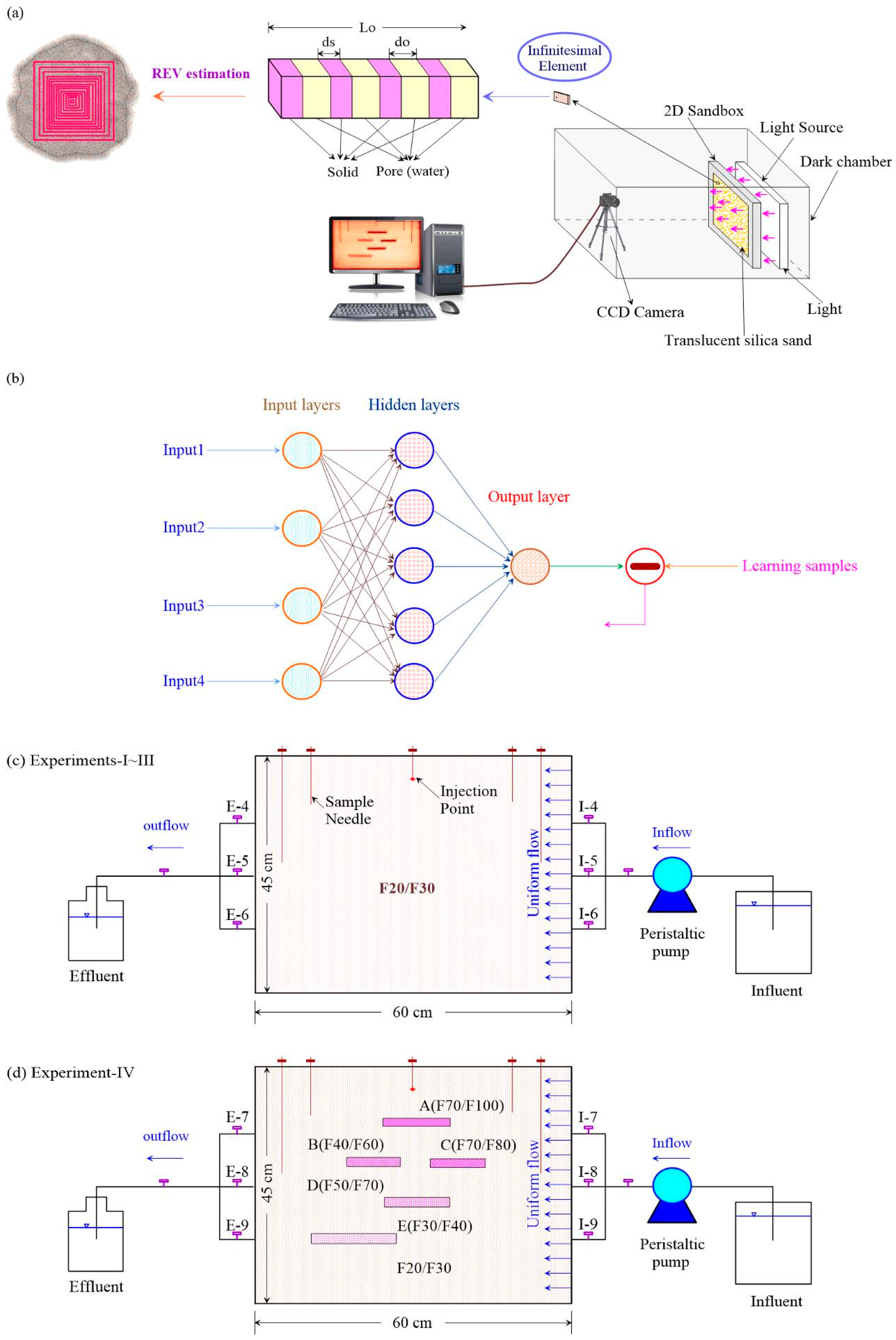
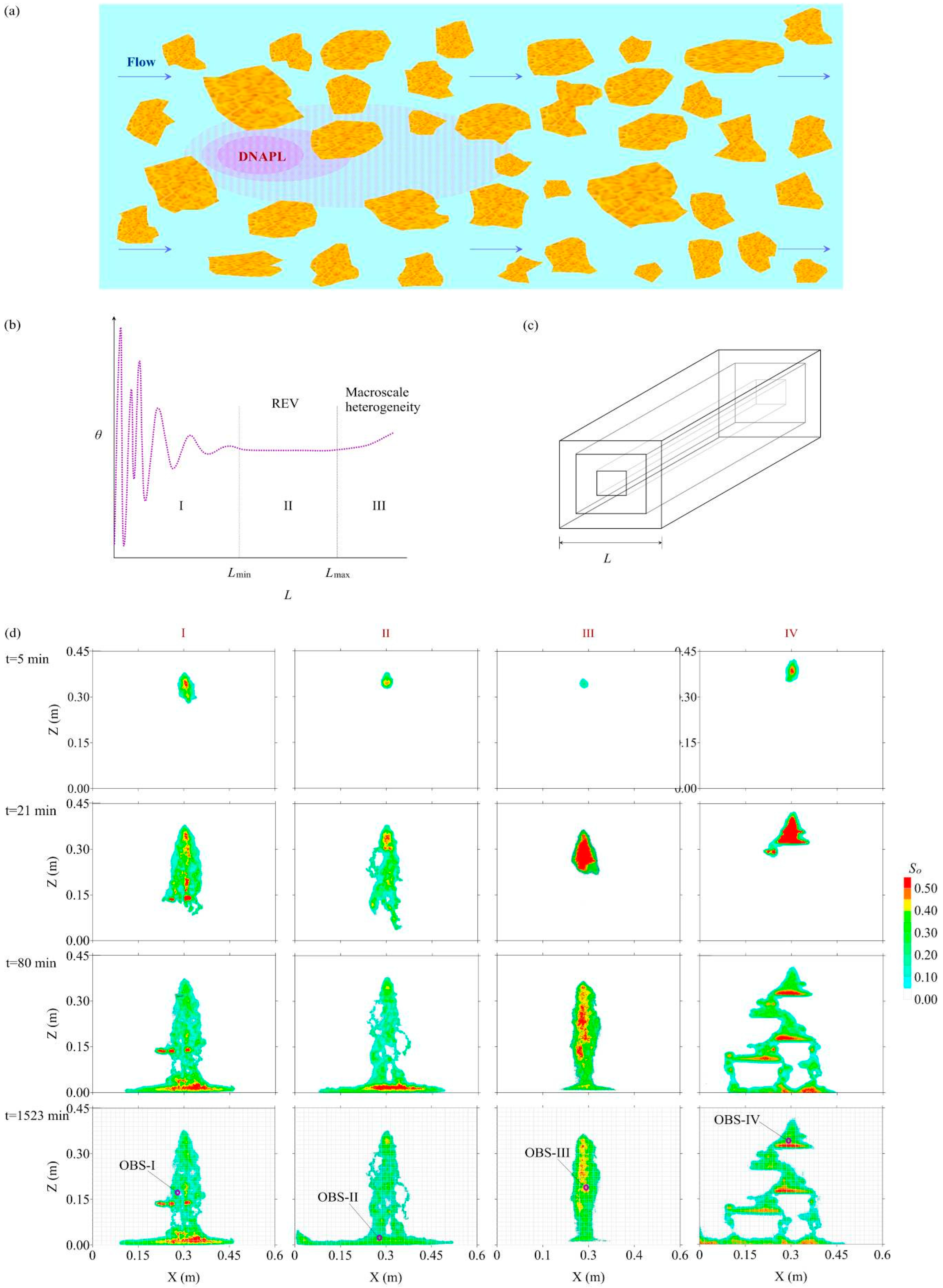
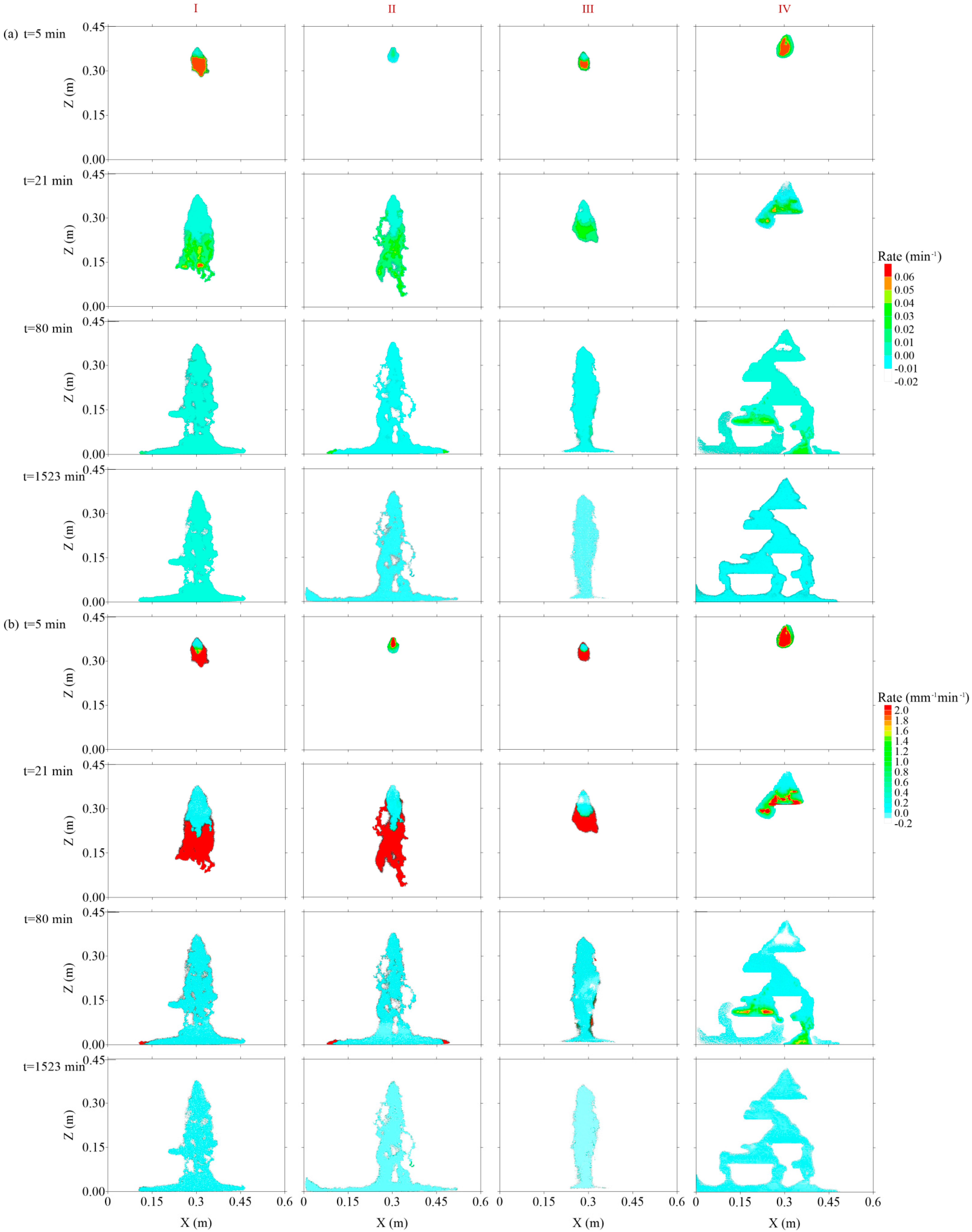

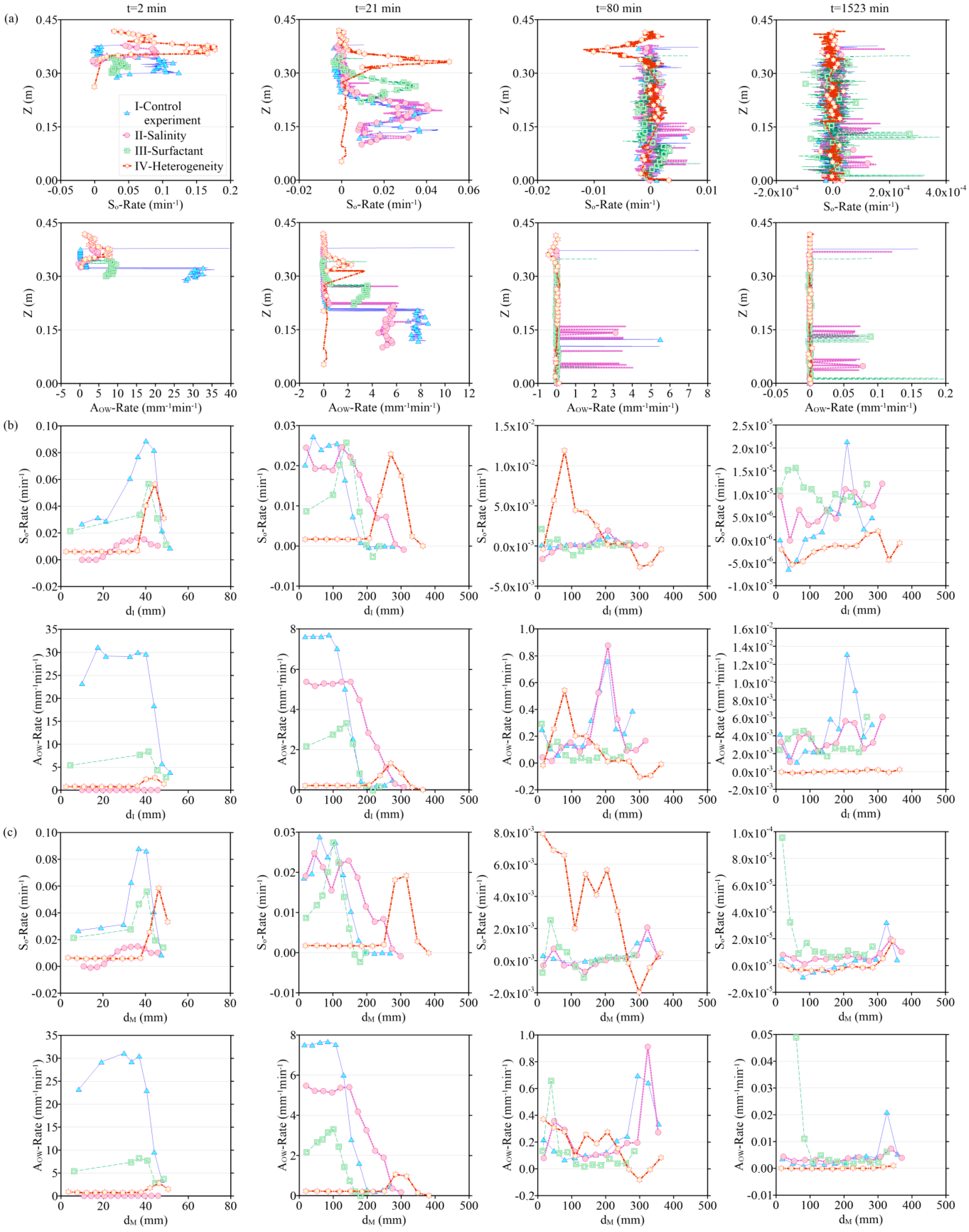
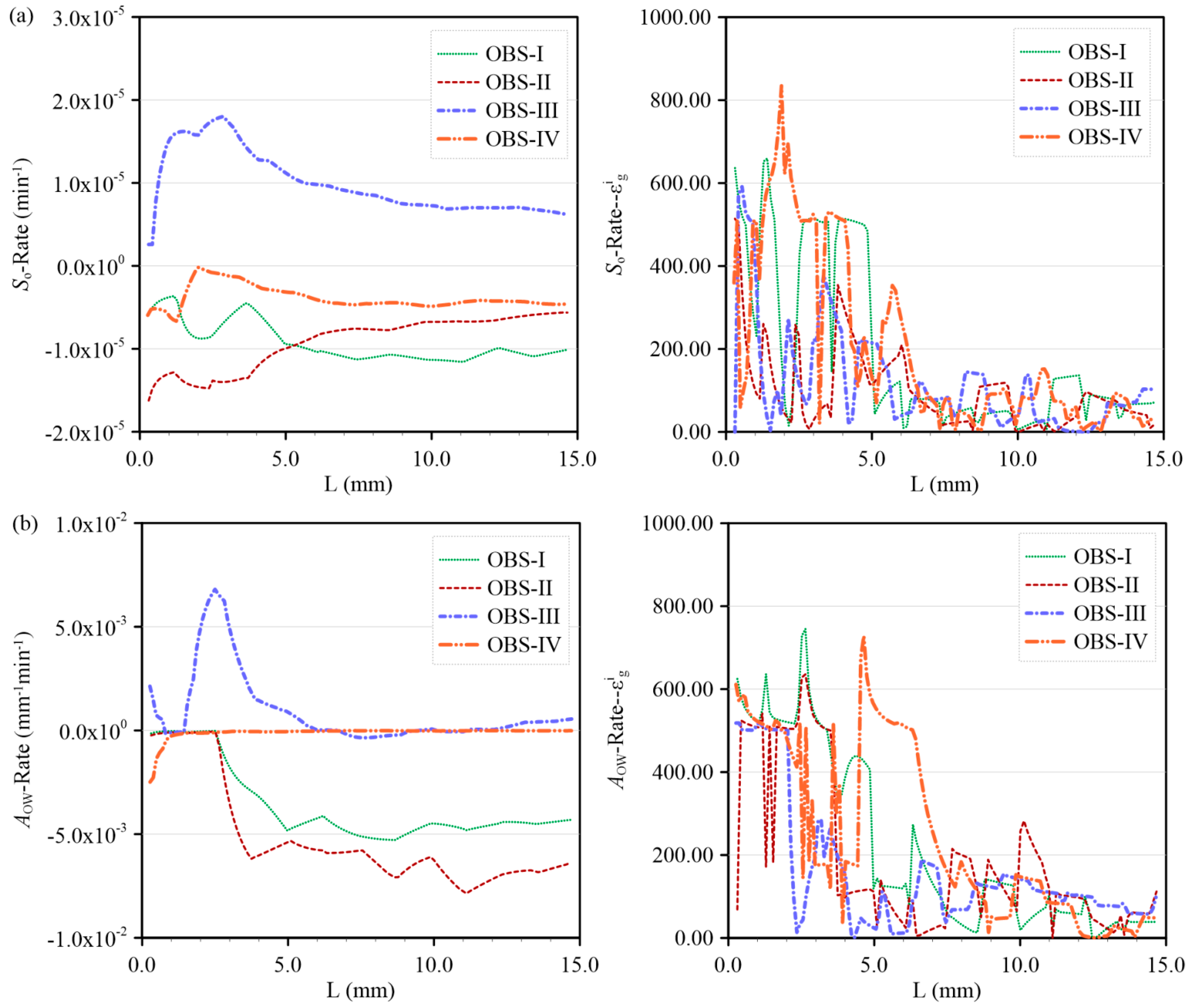
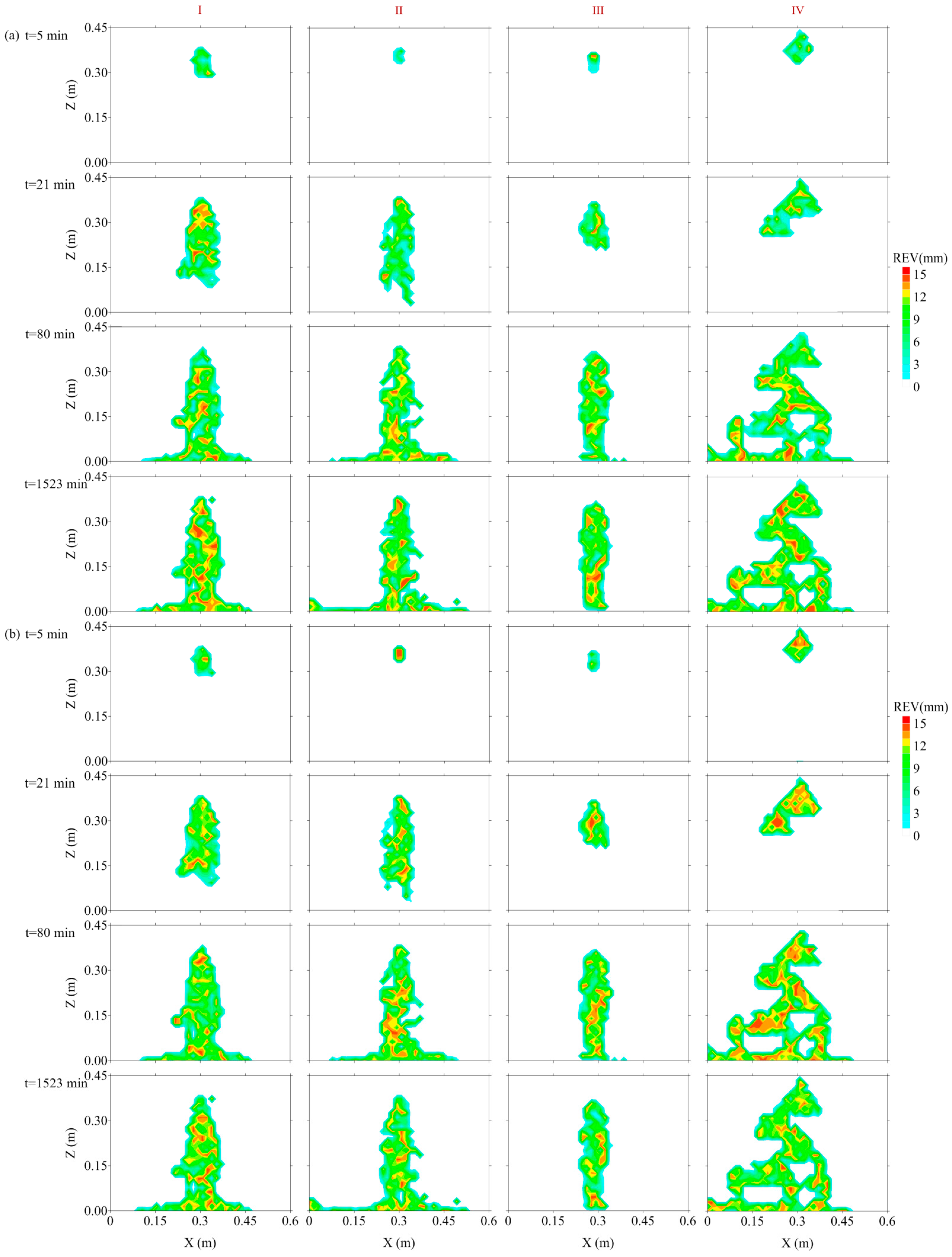

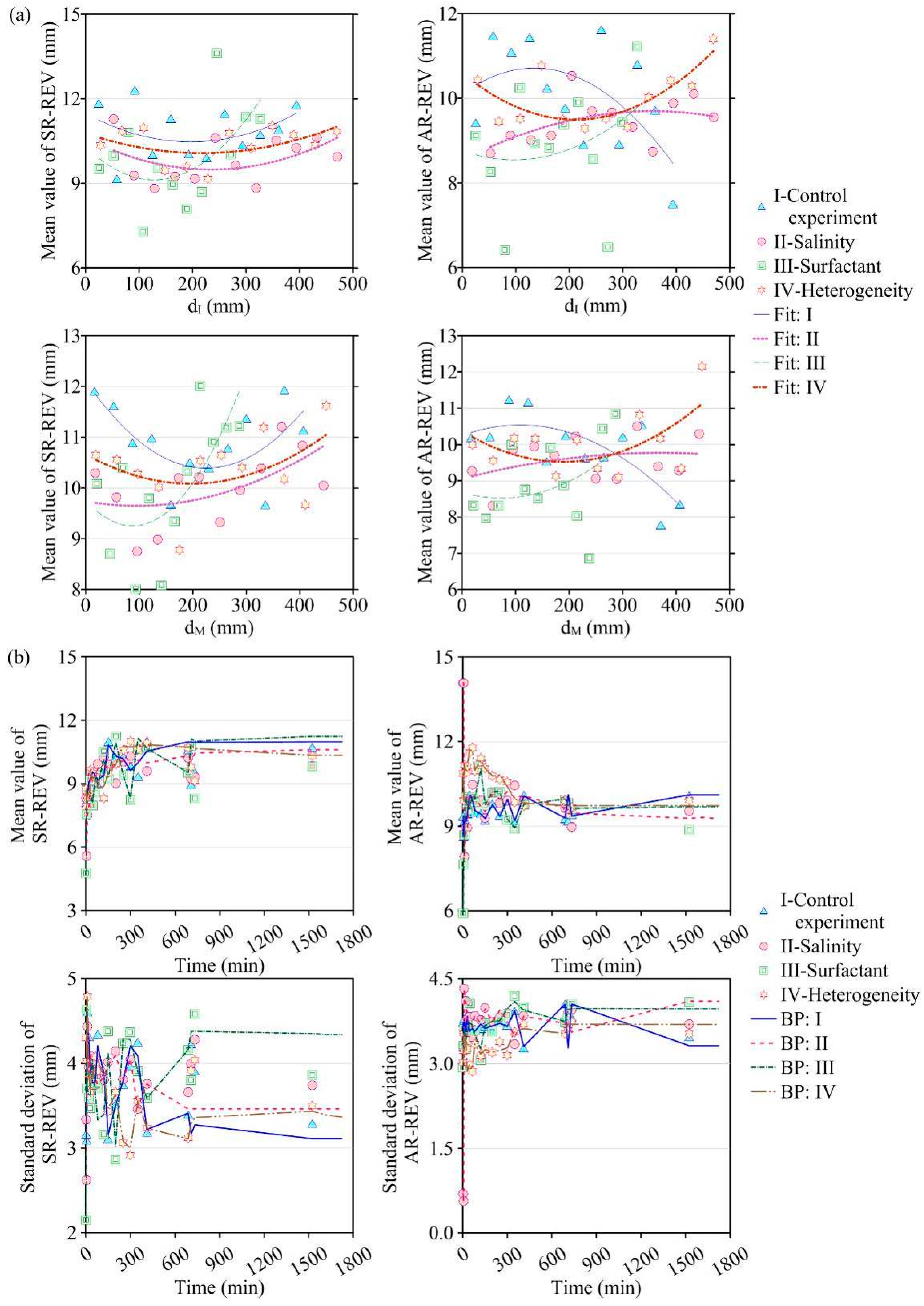
Disclaimer/Publisher’s Note: The statements, opinions and data contained in all publications are solely those of the individual author(s) and contributor(s) and not of MDPI and/or the editor(s). MDPI and/or the editor(s) disclaim responsibility for any injury to people or property resulting from any ideas, methods, instructions or products referred to in the content. |
© 2023 by the authors. Licensee MDPI, Basel, Switzerland. This article is an open access article distributed under the terms and conditions of the Creative Commons Attribution (CC BY) license (https://creativecommons.org/licenses/by/4.0/).
Share and Cite
Cheng, Z.; Lu, G.; Wu, M.; Li, Q. Representative Elementary Volume Estimation and Neural Network-Based Prediction of Change Rates of Dense Non-Aqueous Phase Liquid Saturation and Dense Non-Aqueous Phase Liquid–Water Interfacial Area in Porous Media. Separations 2023, 10, 446. https://doi.org/10.3390/separations10080446
Cheng Z, Lu G, Wu M, Li Q. Representative Elementary Volume Estimation and Neural Network-Based Prediction of Change Rates of Dense Non-Aqueous Phase Liquid Saturation and Dense Non-Aqueous Phase Liquid–Water Interfacial Area in Porous Media. Separations. 2023; 10(8):446. https://doi.org/10.3390/separations10080446
Chicago/Turabian StyleCheng, Zhou, Guoping Lu, Ming Wu, and Qusheng Li. 2023. "Representative Elementary Volume Estimation and Neural Network-Based Prediction of Change Rates of Dense Non-Aqueous Phase Liquid Saturation and Dense Non-Aqueous Phase Liquid–Water Interfacial Area in Porous Media" Separations 10, no. 8: 446. https://doi.org/10.3390/separations10080446
APA StyleCheng, Z., Lu, G., Wu, M., & Li, Q. (2023). Representative Elementary Volume Estimation and Neural Network-Based Prediction of Change Rates of Dense Non-Aqueous Phase Liquid Saturation and Dense Non-Aqueous Phase Liquid–Water Interfacial Area in Porous Media. Separations, 10(8), 446. https://doi.org/10.3390/separations10080446





